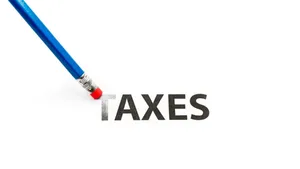The Home Office Deduction allows you to write off a portion of expenses like rent, utilities, and insurance. However, the IRS maintains strict rules to prevent misuse.
Here are the simple rules you must follow, along with the two ways to claim the deduction, ensuring you avoid tax penalties.
The Two Mandatory IRS Requirements
To qualify for the deduction, your home office space must meet two non-negotiable tests:
1. Regular and Exclusive Use
The space must be used regularly and exclusively for your business.
- Exclusive Use: This is the most critical rule. The specific area you are claiming must be used only for business purposes. You cannot claim the dining room table where you occasionally check email if your family also uses it for dinner. If you use a room as a home office during the day and a guest bedroom at night, it fails the exclusive use test.
- Regular Use: You must use the space on an ongoing basis. Occasional or infrequent use does not qualify.
2. Principal Place of Business
Your home must be your principal place of business. This doesn't mean it's the only place you work, but it must be where you conduct your most important business activities.
- Exception: You can still qualify if you use your home exclusively and regularly for business, and you meet clients, patients, or customers there, even if you conduct other work elsewhere. For example, a doctor who sees patients in a home exam room but manages billing from a city office can still qualify.
The Two Ways to Calculate the Deduction
Once you confirm you meet the two mandatory tests, you have two methods for calculating the deduction: the Simplified Option and the Actual Expenses Method.
Method A: The Simplified Option (The Easiest Way)
This option requires minimal record-keeping and is ideal for people who value speed and simplicity.
- The Calculation: You take a standard deduction of $5 per square foot for the area used for business.
- The Cap: This is capped at 300 square feet, meaning the maximum annual deduction is $1,500.
- The Benefit: There is no need to track utility bills, mortgage interest, or rent. This makes calculating the deduction fast and easy when filing with software like TurboTax.
- Recommendation: If your home office is 300 square feet or less and your actual expenses (like a percentage of rent and utilities) are likely to be under $1,500, use this method.
Method B: The Actual Expenses Method (The Maximum Deduction)
This method allows you to claim the highest possible deduction but requires meticulous record-keeping.
- The Calculation: You calculate the percentage of your home devoted to the business (e.g., your 200 sq. ft. office divided by your 2,000 sq. ft. home = 10%). You then deduct that same percentage (10%) of all eligible home expenses.
- Eligible Expenses: This includes rent, mortgage interest, property taxes, utilities (gas, electric), home insurance, and depreciation of your home.
- The Key: You need organized records for every expense throughout the year. QuickBooks and FreshBooks are excellent tools for small businesses, as they can track and categorize these expenses automatically, making tax-time calculations significantly easier. By linking your business bank accounts, they produce reports that simplify the final calculation needed for Form 8829 (Expenses for Business Use of Your Home).
- Recommendation: If your actual percentage of rent, interest, and utilities significantly exceeds $1,500, this method will yield a larger deduction, but only if your records are perfect.
Final Tips for Business Owners
- No Double Dipping: If you take the simplified deduction, you cannot deduct any other home expenses (like mortgage interest) in the business calculation.
- The Documentation Rule: Always maintain photographic evidence of your home office showing its exclusive use (i.e., a desk, computer, file cabinet—not a TV or bed).
- Storage Space: You may be able to deduct space used for inventory or product samples, even if it is a separate garage or storage unit, provided it is the only place you store those business items.
By following these simple rules and utilizing reliable accounting software, you can confidently claim this valuable business deduction.






